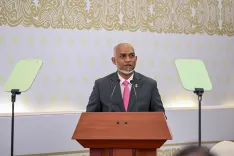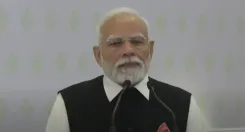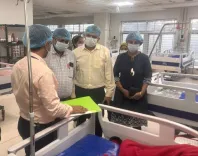Is the Aid Allowed into Gaza Really 'Woefully Inadequate'?

Synopsis
Key Takeaways
- Aid delivery in Gaza is critically insufficient.
- Over one million children face malnutrition.
- Humanitarian workers are at significant risk.
- Access challenges hinder aid operations.
- Calls for ceasefire and aid facilitation are urgent.
United Nations, July 25 (NationPress) The limited aid allowed to enter supply facilities within Gaza is severely insufficient to alleviate starvation or support essential life-saving relief efforts, according to UN humanitarian officials.
The UN Office for the Coordination of Humanitarian Affairs (OCHA) reported on Thursday that although UN teams successfully gathered food aid, primarily flour, from Kerem Shalom/Karem Abu Salem and Zikim crossings on Wednesday, civilians continue to face death, injury, hunger, displacement, and trauma due to ongoing hostilities and a lack of access to food, water, healthcare, and shelter, as reported by Xinhua news agency.
In response to Israeli claims that the global organization and its partners were not retrieving aid at the border crossing, OCHA outlined the significant challenges it faces in delivering relief to the people of Gaza, as reported by Xinhua news agency.
The humanitarian office highlighted that the obstacles encountered by the UN and its partners include bureaucratic, logistical, administrative, and other operational barriers imposed by Israeli authorities, ongoing violence, and access limitations within Gaza, including incidents of criminal looting and gunfire that have resulted in casualties among those gathering to unload aid supplies along convoy routes.
OCHA stated that the violence associated with aid distribution has placed both civilians and humanitarian personnel at significant risk and has frequently compelled aid agencies to suspend the collection of cargo from Israeli-controlled crossings.
The office noted that out of 16 attempts to coordinate movements with Israeli authorities on Wednesday, only eight were successfully facilitated, including the collection and transfer of minimal fuel.
Two other movements were initially approved but later encountered challenges in Gaza.
According to OCHA, partners reported that over one million children are suffering from escalating starvation and malnutrition, with reports of fatalities due to malnutrition increasing daily.
"Based on reports from partners working in nutrition, in the first two weeks of July, nearly 5,000 of the 56,000 children under five screened for malnutrition in the governorates of Gaza, Deir al-Balah, and Khan Younis were identified as acutely malnourished," humanitarian officials stated, adding that this figure represents a staggering nine percent, compared to six percent in June and 2.4 percent in February.
Philippe Lazzarini, Commissioner-General of the UN Relief and Works Agency for Palestine Refugees in the Near East, mentioned on Thursday that one in every five children in Gaza City is malnourished.
OCHA reported that families have been confined to just 12 percent of Gaza's area, while the remaining 88 percent is either situated within Israeli-militarized zones or has been subjected to displacement orders.
The office highlighted that the blockade on essential items, such as tents and other shelter materials, has persisted for over 20 weeks. The limited supply of fuel currently permitted is also wholly inadequate.
OCHA emphasized that aid workers in Gaza, who are themselves affected, displaced, and facing hunger, remain committed to staying and providing life-saving assistance. They join voices across the UN system in urging for a ceasefire and an end to the ongoing devastation.






